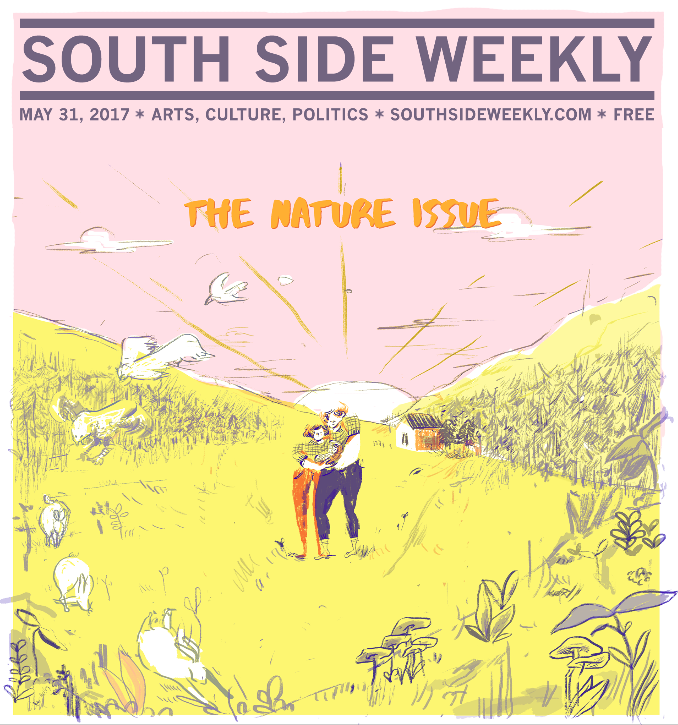Close your eyes and imagine standing in the same spot 150 years ago, in the mid-nineteenth century. Chicago didn’t exist then as it does today; the city was a new invention, with its sidewalks, two-flats, and street lights that turn the sky a dusky orange. Chicago was born from its ashes, from the graveyard of the prairie. It’s easy to forget that we live with nature in the city; with every new skyscraper or pour of concrete, what’s left of the wild is further obscured. But through building our environment, we become an integral part of our ecological community. Chicago embodies the two biggest, and opposing, forces in the natural world—change and resiliency—as it grows while maintaining its essence.
In this year’s Nature Issue, the Weekly asks what it means to experience nature here in the city. We explore parks and the people who build, beautify, and maintain them. We track the growth of mammoth sunflowers and the decline of monk parakeets. We expose the troubling state of Lake Michigan and narrate environmental activists’ efforts to keep its waves clean for future generations. In the city, we take the nature around us for granted and don’t always realize what we have. In these pages, we’ll guide you through nature new and old: what was always here, what might disappear, and what’s yet to bloom in your backyard.
A Community of Flowers → “Our primary goal is to make you smile.”
A Complicated Wild →“Wildness: Relations of People & Place” is a rare bird.
Sun, Sand, and… Something Else → The beaches with the highest bacteria counts have historically been southern beaches.
Building Green Spaces → “But we want to make sure it’s a resource for Chicagoans.”
Art In Nature → An interesting, subtle addition to the park, one that blends in with its already beautiful surroundings and gives back to it.
The State of the Lake → “If you’re looking for the worst-case scenario, look no further than to Indiana’s coastline.”
How Did South American Monk Parakeets End Up In Hyde Park? → “No one has any idea why the birds in Hyde Park have left or died.”
When Will Divvy Be For Everyone? → Divvy stations see virtually no usage in a large swath of the South Side.
The Eyes, Ears, and Voices of the Parks → “Showing up as a volunteer is fun and everything, but it’s more of an enriching, deeper experience when you’re responsible for the site.”
Greener Pastures → “One of the other things that was very important to [Olmsted] was access, by all of the people.”


An amazing range of important and timely topics here in this Nature Issue, which I will share widely with friends, students, and colleagues. From a fellow advocate of urban nature in Chicago, thank you!
Interested in south side nature restoration.
Interested in the Arts, Nature, Conservation, and Urban Agriculture on the South Side.
I’m interested in the Arts, Culture, Conservation, and Urban Agriculture on the South Side.
We have consistently sent info about Lake Calumet to your publication- it is the largest open space area on the city’s south side. It should have been included in your article. Seems like your readers are interested in open space and restoration projects; why wouldn’t you cover this?
https://www.wbez.org/shows/wbez-news/new-park-or-revitalized-port-the-debate-over-lake-calumet/fbb2ea3e-f501-4a25-b221-a13c702ae330